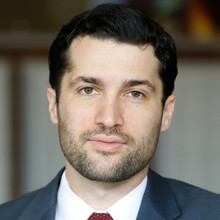Armed Conflict
Congress
Courts & Litigation
Criminal Justice & the Rule of Law
Lawfare News
Terrorism & Extremism
Announcing <em>Lawfare</em>'s First E-Book: <em>Lawfare on the National Defense Authorization Acts</em>
We are very pleased to announce Lawfare's first e-book, Lawfare on the National Defense Authorization Acts , which is now available in Kindle format on Amazon for $4.99.
, which is now available in Kindle format on Amazon for $4.99.
Published by The Lawfare Institute
in Cooperation With

We are very pleased to announce Lawfare's first e-book, Lawfare on the National Defense Authorization Acts , which is now available in Kindle format on Amazon for $4.99. The book, edited and with a narrative introduction by Alan, is a collection of 114 of Lawfare's previously published posts on the 2011–2013 NDAAs and the Southern District of New York's decision in Hedges v. Obama. We hope that by bringing together our most important posts in one convenient, easy-to-read format, we'll be able to bring Lawfare's analysis and commentary to new readers and make it more useful to our existing ones. And because the NDAAs and the caselaw and executive-branch practice surrounding them are constantly evolving, we plan on releasing periodic updates to this book as events warrant. Please send any corrections, comments, and suggestions to NDAAbook.lawfare@gmail.com.
, which is now available in Kindle format on Amazon for $4.99. The book, edited and with a narrative introduction by Alan, is a collection of 114 of Lawfare's previously published posts on the 2011–2013 NDAAs and the Southern District of New York's decision in Hedges v. Obama. We hope that by bringing together our most important posts in one convenient, easy-to-read format, we'll be able to bring Lawfare's analysis and commentary to new readers and make it more useful to our existing ones. And because the NDAAs and the caselaw and executive-branch practice surrounding them are constantly evolving, we plan on releasing periodic updates to this book as events warrant. Please send any corrections, comments, and suggestions to NDAAbook.lawfare@gmail.com.
Below the fold, we've included a copy of the introduction (with internal links removed), to give you a sense of the book's contents and organization. Words and phrases in bold represent links to the actual posts included in the book. We hope you like it!
Below the fold, we've included a copy of the introduction (with internal links removed), to give you a sense of the book's contents and organization. Words and phrases in bold represent links to the actual posts included in the book. We hope you like it!
Benjamin Wittes is editor in chief of Lawfare and a Senior Fellow in Governance Studies at the Brookings Institution. He is the author of several books.
Alan Z. Rozenshtein is an Associate Professor of Law at the University of Minnesota Law School, Research Director and Senior Editor at Lawfare, a Nonresident Senior Fellow at the Brookings Institution, and a Term Member of the Council on Foreign Relations. Previously, he served as an Attorney Advisor with the Office of Law and Policy in the National Security Division of the U.S. Department of Justice and a Special Assistant United States Attorney in the U.S. Attorney's Office for the District of Maryland. He also speaks and consults on technology policy matters.





